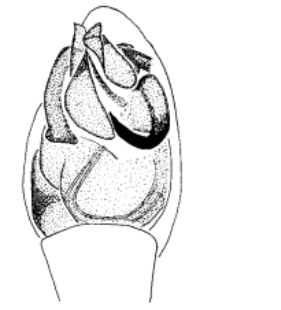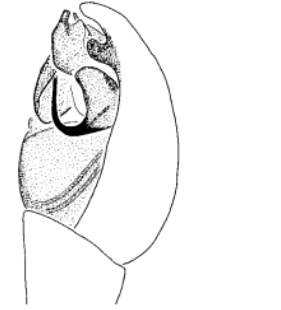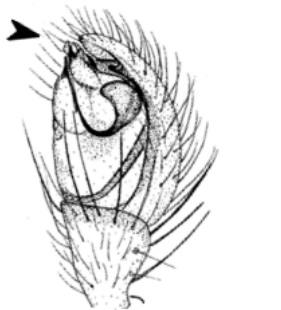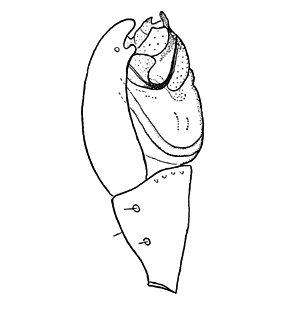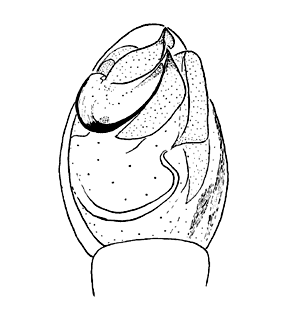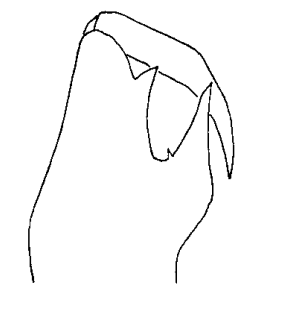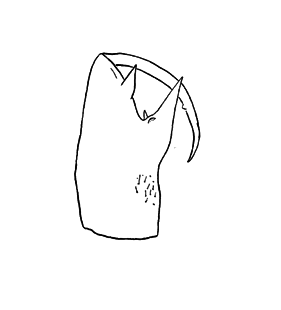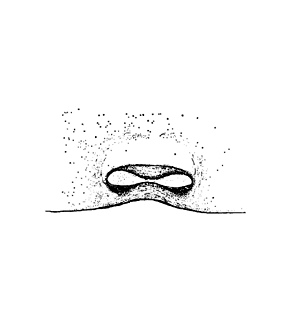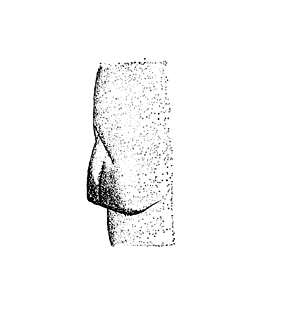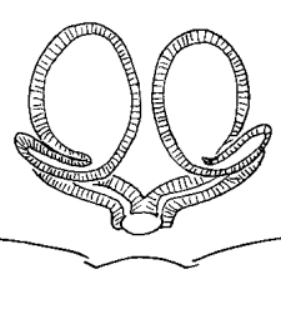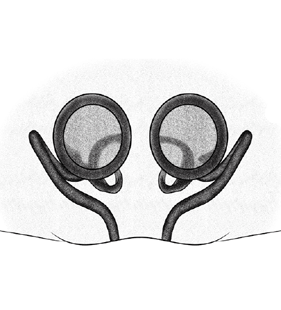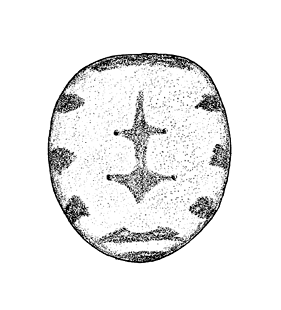Enoplognatha oelandica (Thorell, 1875)
Beschreibung
Pedipalpus mit kleinen Basaltuberkeln an Radix. Epigyne mit schwach nach vorne gebogenem Hinterrand, sklerotisierter Hinterrand der Epigynengrube 1-2 mal so breit wie Grubendurchmesser. Prosoma braun, mit schmalem, schwarzem Rand. Sternum braun, schwärzlich übertönt, Rand schwarz. Cheliceren dunkelbraun. Beine braun, alle Glieder distal dunkler. Opisthosoma grau, dorsal mit angedeutetem Folium.
Körperlänge Männchen: 2.5-3 mmKörperlänge Weibchen: 3-5 mm
Zusätzliche Informationen
Im Gras sonniger und warmer Orte
Verbreitung
Phänologie
| Jan | Feb | Mar | Apr | May | Jun | Jul | Aug | Sep | Oct | Nov | Dec |
 |  |
Abbildungen
Verbreitungsnachweise
"No reference" bedeutet nicht, dass die Art in diesem Land nicht vorkommt, sondern dass wir die Referenz hierfür noch nicht eingefügt haben. Wir arbeiten daran.
Literatur
Blagoev G, Deltshev C, Lazarov S, Naumova M (2018) The spiders (Araneae) of Bulgaria. Version: August 2018. National Museum of Natural History, Bulgarian Academy of Sciences. Online at http://www.nmnhs.com/spiders-bulgaria/ (accessed on 10.9.2018) ![]()
Bosmans R, Van Keer J (1999) The genus Enoplognatha Pavesi, 1880 in the Mediterranean region (Araneae: Theridiidae). Bulletin of the British Arachnological Society 11: 209-241 ![]()
Bosmans R, Van Keer K (2017) Een herziene soortenlijst van de Belgische spinnen (Araneae). Nieuwsbrief van de Belgische Arachnologische Vereniging 32: 39-69 ![]()
Branco V V, Morano E, Cardoso P (2019) An update to the Iberian spider checklist (Araneae). Zootaxa 4614: 201-254 ![]()
Komnenov M (2014) Spider fauna of the Osogovo Mt. Range, Northeastern Macedonia. Fauna Balkana 2: 1-267 ![]()
Kronestedt T (2001) Checklist of Spiders (Araneae) in Sweden [Preliminary version February 2001] ![]()
Lavery A (2019) A revised checklist of the spiders of Great Britain and Ireland. Arachnology 18: 196-212 ![]()
Monzo C, Molla O, Vanaclocha P, Montzon H, Melic A, Castañera P, Urbaneja A (2011) Citrus-orchard ground harbours a diverse, well-established and abundant ground-dwelling spider fauna. Spanish Journal of Agricultural Research 9: 606-616 ![]()
Otto S (2022) Caucasian spiders. A faunistic database on the spiders of the Caucasus Ecoregion. Database version 02.2022. Internet: caucasus-spiders.info.
Polchaninova N, Prokopenko E (2019) An updated checklist of spiders (Arachnida: Araneae) of Left-Bank Ukraine. Arachnologische Mitteilungen 57: 60-64 & App ![]()
Ponomarev A V (2022) Spiders (Arachnida: Araneae) of the southeast of the Russian Plain: catalogue, the fauna specific features. SSC RAS Publishers, Rostov-on-Don, 640 pp. ![]()
Roberts M J (1995) Collins Field Guide: Spiders of Britain & Northern Europe. HarperCollins, London, 383 pp. ![]()
Rozwałka R, Stanska M (2008) Check-list of spiders (Araneae) of Poland. 1. December 2008. online at http://www.arachnologia.edu.pl/en/species/8-spiders-of-poland.html ![]()
Samu F, Szinetár C (1999) Bibliographic check list of the Hungarian spider fauna. Bulletin of the British Arachnological Society 11: 161-184 ![]()
Seropian A, Bulbulashvili N, Krammer H-J, Thormann J, Hein N, Karalashvili L, Karalashvili N, Datunashvili A (2024a) Picking pearls from the Silk Road: insights into the spider (Arachnida, Araneae) diversity in Georgia from the Caucasus Barcode of Life (CaBoL) project. Part III. Caucasiana 3: 89-118 ![]()
Van Keer J, Van Keer K, De Koninck H, Ramel G (2010) The arachnofauna (Araneae) of wetland Kerkini (Macedonia-Northern Central Greece). Acta Zoologica Bulgarica 62: 141-160 ![]()
WSC (2025) World Spider Catalog. Version 26. Natural History Museum Bern, online at http://wsc.nmbe.ch (28.2.2025) doi: 10.24436/2 ![]()
Wunderlich J (1976) Zur Kenntnis der mitteleuropäischen Arten der Gattung Enoplognatha Pavesi und Robertus O. Pick. Cambridge Senckenbergiana Biologica 57: 97-112 ![]()
